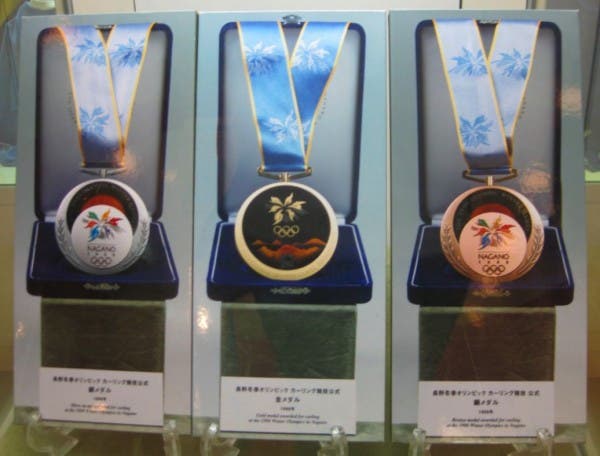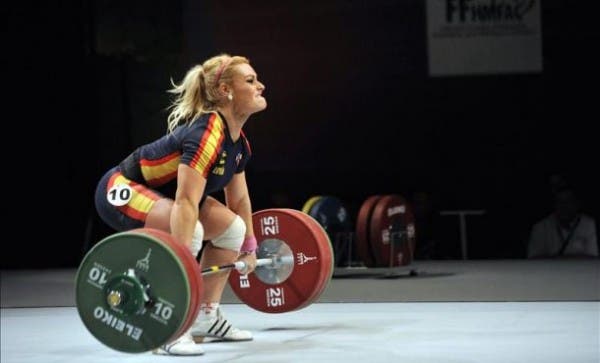Visualization is the mental act of testing. It is about creating or recreating a lift in our imagination. This includes daydreaming, fantasizing, and guided tours of your dream world. In our case, we envision the successful completion of a survey. It is positive thinking.
Sports science has taught us that visualization electrically activates (stimulates) corresponding muscle groups. Professional athletes and their coaches recognize the usefulness and importance of visualization in performance. Mental rehearsal can increase your performance due to the connection between mind and body. Your mind, as well as your muscles, must learn and practice movement patterns to maximize performance.
The psychology and programming of visualization goes beyond what is explained here. This article will serve as a small sample of a practical example. For more information, seek out a sports psychologist, professional coach, or specialist familiar with these mental abilities (non-sports psychologist).
How to start weightlifting
In 2010, I started iron training. I was new to maximal effort lifts, and I experienced great anxiety for the “1RM test” day. I just wanted to take those lifts to the end. I have wanted to exist at all times except when I was at the launch, doing it and holding the bar. However, I think that one rep max lift is one of the best training ideas. The bitter idea of chasing higher and higher highs was above anything else on my mind. Even now, even though my program has changed and my knowledge and experience with irons is much greater, I still maintain that finding “the highest rep” is the primary element of strength and power training.
What helped me through these lifts and eased my anxiety was the use of visualization. With each training I passed, I was gaining experience, I have had more sensory information to enrich my visualizations, to make them more real. As I have gained experience, I have learned to be “in the moment” and enjoy it. This emotionally positive approach helped me gain even more awareness, even more so on failed attempts.
What to do before raising the bar
When viewing a survey, you can do it in a number of ways. You can be associated or dissociated (here or there), and you can also visualize the process or the result (before or after). If you visualize your lifts and see everything through your own eyes as in reality, it is associated. You are visualizing in the first person. On the other hand, if you imagine your lifts from outside your body, like watching yourself on television, you are dissociated. You are visualizing in the third person. When viewing a survey and only seeing the end, you are viewing the results. For example, if you are doing a snatch and you see the bar above your head, it means that you are seeing the results. If you visualize that the lift is from start-up through the lift movement to the end, you are visualizing the process.
Everyone visualizes differently. Find out how you visualize and what details you naturally include and emphasize in your visualizations. Next, to hone your visualization skills, try visualizing in a different way. You may find that you visualize better with a different method. An easy way to alter your display method is as follows. Let’s take this example: let’s say that you visualize from an associated point of view, that is, through your own eyes. First, visualize yourself for a few moments. See through your own eyes as you normally do. Then recreate your visualization from another point of view, outside of yourself, from the point of view of a television camera. Follow your visualization and see yourself through the scene in which you are immersed.
Try this method with a lift. Visualize the lift with your own eyes. Then reverse your point of view associated with dissociated (from first person to third person). This will look like recording your survey with a digital camera. Try the lift in your mind and then go to the platform. Don’t immediately rule out that a point of view is not effective for you. It is possible that practicing with a new perspective could lead to better results than your original point of view.
Once you can change perspective on the visualization, now it’s time to alter the process / results visualization. Go back to your visualization, immerse yourself. If you fully visualize the scene from beginning to end, including from survey to end. See yourself victorious. If you usually only see the end of the survey, consider all the other details. See the preparation and climb, feel the weight and stress, and hear your friends cheering. This part can be tedious. Sometimes it is difficult to change a thought process, but give it a try. Have the visualization, but of the whole uprising.
You may also find that you visualize the preparation but not the end of the ascent. You may only see certain parts. In other words, your natural or best visualization method may be a mixed method. That’s fine. Some people visualize as a movie, part of the process, from different people’s point of view with different soundtracks. These display models are the mnemonic rules to guide you in improving your mind.
How to view a survey
Once you are able to change perspectives and shapes, add them together. If you usually see the whole process in the third person, I only imagined the result from the first person. If you like honing your mind, try to be proficient in all four combinations:
- First person, process.
- First person, result.

- Third person, process.

- Third person, result.

Some words of caution
One day at the gym, take a lift, set up the bar, put on some weight, and then give each method a try. Visualization takes practice, as well as lifting, to master, so get to it. Learn to visualize and test your methods under safe, controlled, and low-intensity conditions. Visualization can be distracting and therefore dangerous. In fact, it can decrease your attention if it is not adapted to it or does it badly. “Thinking” and having the wrong kinds of thoughts before a lift can kill you.
Don’t try something totally new at a crucial time. This is for two reasons. One of them, we do not get carried away by other ways. By default, we do what we know how to do. Second, the introduction of new unknown variables can be disastrous. You wouldn’t make an exotic, spicy dish that you’ve never tried before on the eve of your next big meeting. These are the things that haunt us until we get under the weight of the bar. Therefore, a medium or low load load is best when learning to visualize.
Level of detail
Let’s walk one step further in visualization methods. Imagine yourself about to perform a lift. Where are you? How does the room appear? How much weight is he going to lift? What music are you listening to? How do you feel physically and mentally? As you extract visualizations from the experience, you will have more concrete details to include. There are numerous details that go into the construction of a reality in your mind, but you have to find out what the relevant details are. During certain visualizations, lots of detail can help, for example when you’re not in training and you’re working on your visualization skills. If you are about to do a lift, you will want to see the lift without distractions or things that take your focus away. Examine the most powerful things that are in your thoughts. What senses, emotions and thoughts dominate when you think and successfully execute a lift? Are there any details that I can add or modify? Put them to work on your visualizations in the future, as the emotional cues that will inspire your mind and stimulate your nerves and muscles to complete the task.
More applications
The visualization methods described are applicable to both series and individual surveys. Through further experience, I began to view a series as a succession of maximum lifts. It’s easier for me to think of a series with good form if I watch each rerun individually. When a single is done, there is only one “first repeat”, which becomes the entire work of the entire series. In a multiple rep set, there is still only one “rep first,” but then there are the rest of the reps as well, each requiring equal attention and effort. Visualization can help separate the goal of completing the set into several small goals of completing each rep.
This is how visualization skills help in goal setting. These visualization combinations can help you identify each step taken to reach a higher goal. For example, to set a record for your next event (such as tournaments), you have to do more to see yourself on the podium with a medal. You have to train, you need a program, you need to perform every lift, you need sleep and recovery, and you need to work on joint mobility. You can and should visualize everything.
Why is it worth it?
Visualizing works. Even if you do, whatever method you use, and whatever perspective your imagination works from, you can achieve more with positive thinking. The visualization is a simple, comfortable, easy to execute, totally legal and helps to lift. Your hopes and dreams make a difference because they are the starting point for action. Visualization in the survey is a simple act of drawing what you are about to do and then making it happen. It is not witchcraft or folklore. Strengthen your mind and shape your victory.